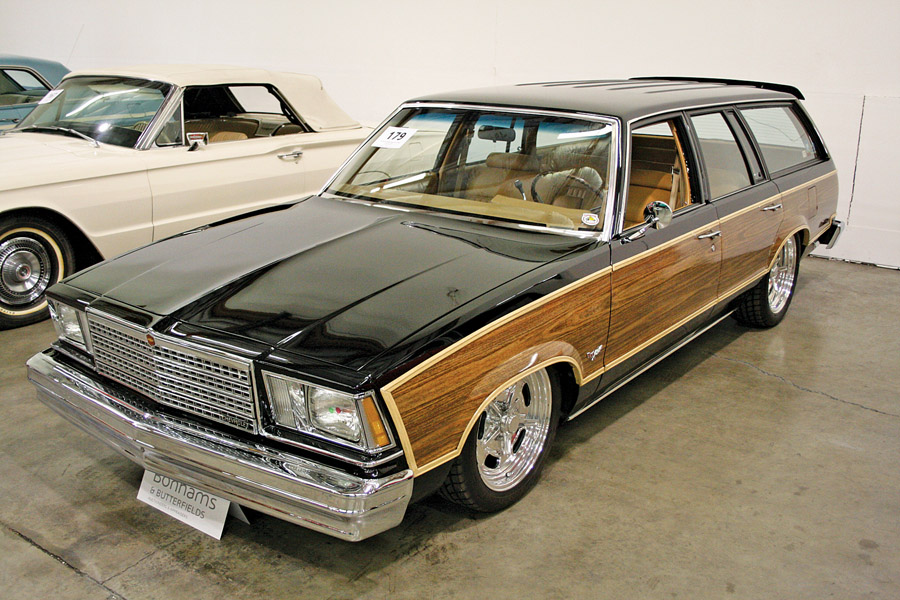
I’ve been following the classic car auction scene on a daily basis for more than a decade now.
During that time, I’ve seen a lot of ups and downs in values — the most notable being the housing crash of 2008 that blew the floor out of the then-booming muscle car market and turned seven-figure Mopars into no-sale trailer queens.
Looking back at the changes that have taken place over those 11 or so years, another adjustment has popped up that rivals even that massive value reset. That change, which started out small but has become a full-bore market movement, is a shift in the cars that we as collectors are deeming collectible.
Go to any auction — doesn’t matter which one or where it is — and take stock of the number of “modern” cars you see there. Compare that with results from the same auction five years back and count the number of similar cars that appeared then.
The result, and the overall trend you’ll see, is that later 1970s, 1980s, 1990s, and even 2000s have come on strong in auction appearances — think Trans Am, GNX, IROC, ZR-1, 1LE, Cobra — and buyers are buying.
That doesn’t even take into account the values of these cars — increases in both interest and dollar totals are the sole reason more modern cars are crossing classic-car auction blocks all around the world. It’s not just the special examples I listed that are popping up, either. The everyday stuff that disappeared while you weren’t looking? It’s back. And it’s more expensive than you’re probably expecting.
Call it a shift in demographics if you want. Maybe it is as simple as younger buyers entering the market and buying what they’ve always wanted to own.
But the more I think about it, the more I’m convinced that it’s more than just that. I think it’s a shift in interest, and a reflection back at ourselves as collectors.
Something has happened along the way that has turned these cars, once considered too new or too pedestrian to be “collectibles,” into sought-after items at places where lead sleds, traditional hot rods, and original muscle reigned supreme.
Time marches on
It’s funny how quickly things change, and I’m not just saying that because I’m currently adjusting to life with a new baby at home.
In the nearly 20 years I’ve owned my Caprice, which is featured in this issue’s “Wrenching” feature on p. 30, I’ve watched the world change around it — there are now fewer examples like it in town, to the point where it’s usually the only Caprice at most local car events.
My Caprice’s only claim to fame is surviving the attrition. Most of its luxo-barge brethren were used up and crushed — the ones that are left now get a lot more attention. Well, that and in my case, loping into parking lots with noisy exhaust and a huge cam.
But I see the same thing happening to other cars from more recent eras — ones that didn’t enjoy high styling from Earl or Exner or high performance from a muscle war. I see my own reaction to them changing as well. Funnily enough, even cars I don’t want to like from the era of no performance are starting to look good.
Case in point: Back in 2011, Bonhams auctioned off the Wally Lewis Collection of American classics and hot rods in Portland. The sale had everything from Shoebox Chevys to 409 Impalas and a brace of 1930s Fords.
Among all the cool stuff there, what was the one car I still kick myself for not buying? A 1978 Chevrolet Malibu custom station wagon that sold as Lot 179 for $26,910.
Yep, the epitome of uncool GM wagons — my grade-school music teacher drove one through the 1980s — is the car I wish I owned.
In my defense, it was mirror-like in deep black, had new woodgrain sides, sat right on polished Salt Flat specials, and had a fantastic-smelling leather interior that looked stock but wasn’t. And it had a 350 under the hood. Usable, cool, different. When’s the last time you saw one?
The more things change…
What’s really changing our opinions of these newer cars? I tend to think that it’s related to the simple passage of time.
Car people are car people because we like mechanical things, and we like individuality. While pretty much all cars, including the traditional ’50s car-guy fodder, are all series-production machines, the passage of time tends to thin the herd and make what was once ubiquitous into something special to show off. Add in a little sentimentality (yes, even for the 1980s), and you’ve got a reason to buy something like that wagon.
But that doesn’t mean your Shoebox Chevys are on their way out of favor. It’s just a new graduating class of cool, here to be preserved or modified at the whims of their owners.
What’s next? Dodge Neons? Let’s check back in a decade.